Hlynur Hallsson
Nytt - Neu - New
-
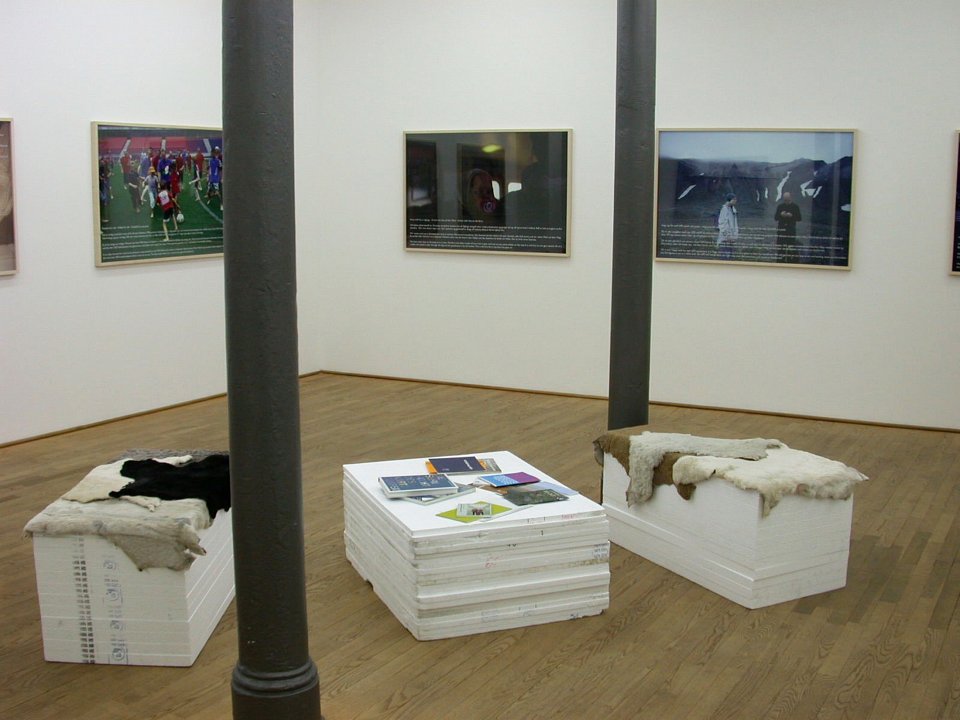
Nytt – Neu – New, installation view, Kuckei + Kuckei, 2007
-
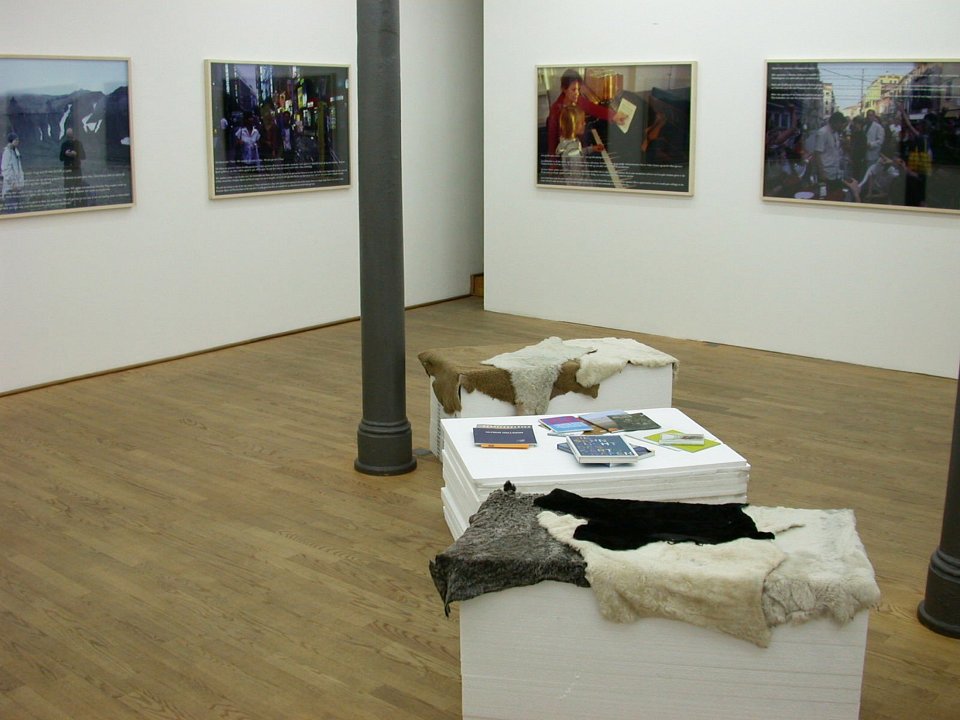
Nytt – Neu – New, installation view, Kuckei + Kuckei, 2007
-
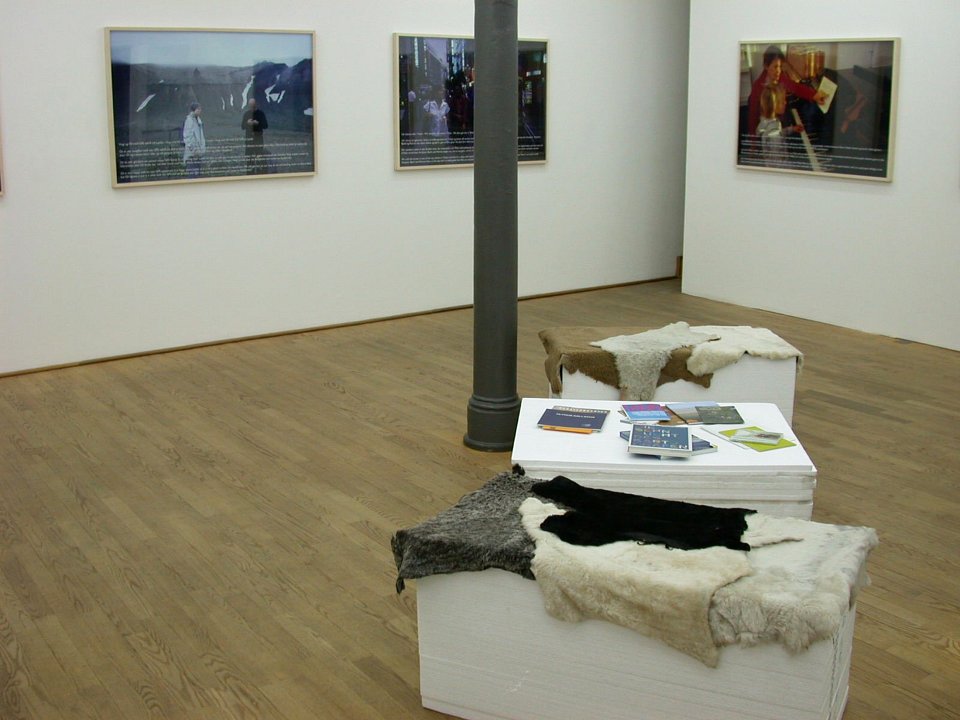
Nytt – Neu – New, installation view, Kuckei + Kuckei, 2007
-
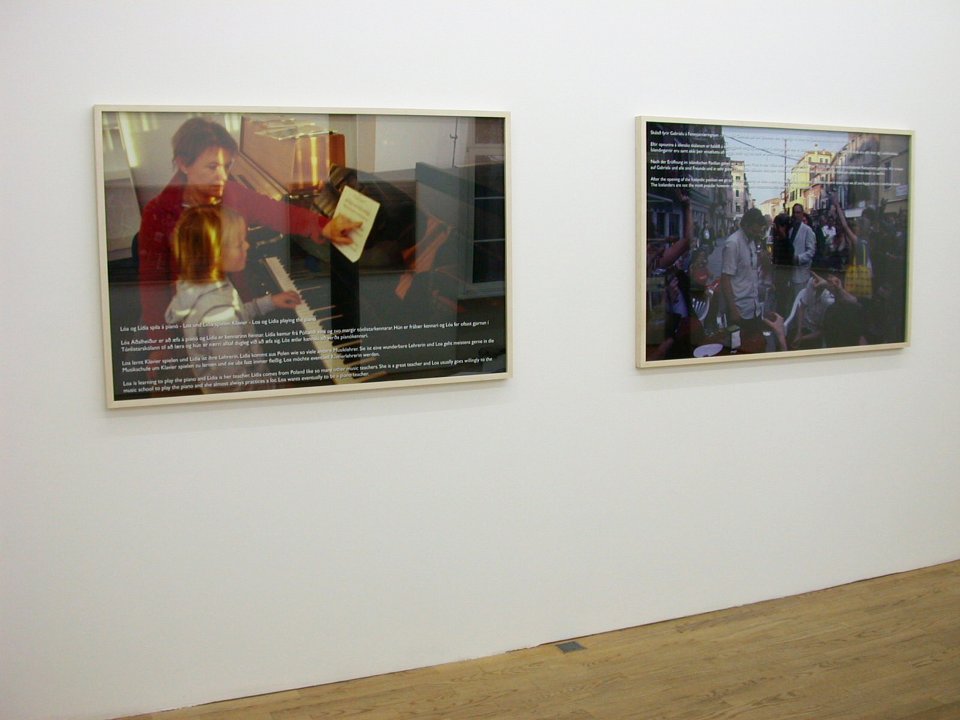
Nytt – Neu – New, installation view, Kuckei + Kuckei, 2007
-
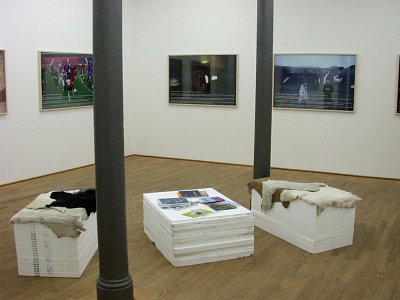
Nytt – Neu – New, installation view, Kuckei + Kuckei, 2007
-
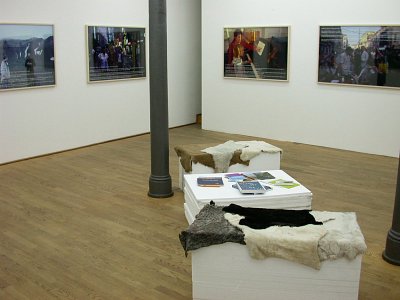
Nytt – Neu – New, installation view, Kuckei + Kuckei, 2007
-
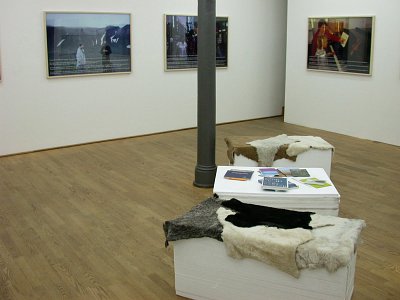
Nytt – Neu – New, installation view, Kuckei + Kuckei, 2007
-
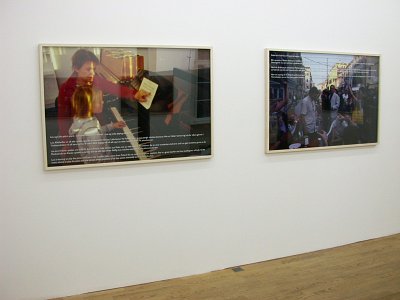
Nytt – Neu – New, installation view, Kuckei + Kuckei, 2007
Hlynur Hallsson is always “on the road.” The Icelander is a traveler between continents and cultures who, because of his interest in his fellow man, is always looking for contact and conversation with those around him. These meetings yield a wealth of snapshots that form the basis for his photo cycle “Myndir – Bilder – Pictures”.
These are photographs integrated with a trilingual text. In their totality they give rise to a “road movie” created from Hallsson’s experiences and memories and which functions as a kind of diary. Released from any chronological order, family scenes are threaded together with photos of friends and strangers, shots of different regions and towns are interspersed with images from the international art world. Before this background emerges a colorful and very private sequence of images from Hallsson’s own life that seems to arise casually, but interwoven with the texts creates a virtually incredible effect.
For each photograph Hallsson tells us a brief story in Icelandic, German and English. This linguistic sequence is maintained consistently for all the works and at the same time is a reference to the artist’s communicative horizons. Icelandic is his native language, German the language of his second home, and English a world language. Ultimately this clearly demonstrates what a pivotal role language and communication play in the work of this artist from Iceland.
Hallsson’s narratives, created of only simple sentences and subordinate clauses, move us with their immediacy – the result of how directly the artist has communicated with us. For example, he begins the story of a hot air balloon ride with his son Hugi on the occasion of Hugi’s 10th birthday with utter innocence. But the tale takes a darker twist and loses its idyllic atmosphere when the artist’s thoughts turn for a moment to Ian McEwan’s book “Enduring Love” [“Liebeswahn”], which also describes a balloon ride – but one that does not end well.
The possibility of a crash and the book that reminds the artist of this – these are precisely what delivers the slight shift within the narrative that rescues the account from quotidian banality. It is not merely the juxtaposition of simplicity and complexity that distinguishes these stories. Ambiguity is a constant that runs through the entire cycle and also appears in the work showing the courtyard of the Art Basel Conference Center. In nice weather many visitors gather there; it is a communicative place. But who, if not Hallsson, would have come upon the idea of comparing the chatter of humans with the background sounds of a bird cliff? For the artist this comparison seemed obvious; but for us he has opened the limits of our perceptions, and at the same time he has made it possible for us to expand our horizons.
Hallsson’s stories have referential qualities. They tell us something about him as a person and his vision of things. Perhaps it is necessary to come from Iceland in order to see the world as he does.